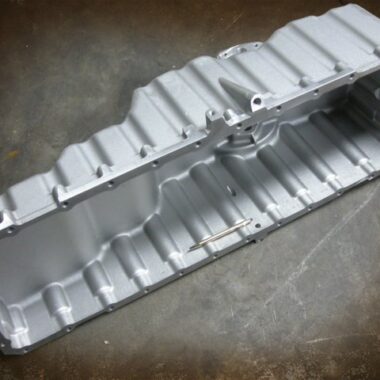About Aluminum Casting Essentials: Everything You Need to Know
Wiki Article
Crafting Excellence: How to Attain High-Quality Light Weight Aluminum Castings Every Single Time
In the world of light weight aluminum casting, the pursuit of excellence is a continual journey that requires a precise method and a keen understanding of the details entailed. Accomplishing consistent premium aluminum spreadings demands a comprehensive understanding of the processes, from selecting the ideal alloy to carrying out accurate mold and mildew styles and meticulously regulating casting criteria. Nevertheless, real proficiency depends on the capacity to carry out these components flawlessly to produce remarkable castings every single time. As we discover the ins and outs of crafting perfection in light weight aluminum spreadings, discovering the vital approaches and strategies that lead to impressive results becomes critical for those making every effort for quality in this customized field.Recognizing Light Weight Aluminum Casting Processes
Aluminum casting processes, vital in the production sector, entail the detailed makeover of molten aluminum into solid forms through a series of carefully controlled steps. Understanding these processes is paramount to accomplishing high-quality aluminum spreadings consistently - about aluminum casting. The key approaches used in aluminum casting are pass away spreading, sand spreading, and financial investment casting
Each of these processes has its benefits and is chosen based upon variables like intricacy, volume, and preferred surface of the aluminum casting. about aluminum casting. Comprehending the ins and outs of these approaches is crucial for manufacturers aiming to produce top quality light weight aluminum castings regularly
Picking the Right Light Weight Aluminum Alloy
Selecting the ideal aluminum alloy is a critical decision in the manufacturing of premium light weight aluminum castings. When picking an aluminum alloy for spreading, it is important to take into consideration the details needs of the application to make sure optimum performance.One of the most frequently made use of light weight aluminum alloys for spreading is A356 - about aluminum casting. For applications requiring high strength, 7075 aluminum alloy is a popular option due to its extraordinary strength-to-weight proportion.
Along with mechanical properties, considerations such as cost, availability, and post-casting processes should also influence the selection of the best aluminum alloy. By thoroughly examining these aspects, makers can make sure the manufacturing of top notch light weight aluminum castings that meet the desired specifications.
Implementing Proper Mold And Mildew Layout
Establishing an efficient mold design is crucial for ensuring the effective manufacturing of premium aluminum castings. Correct mold and mildew design plays a substantial function in accomplishing the desired characteristics of the end product. To execute a successful mold and mildew style, factors such as product circulation, cooling prices, and component geometry have to be very carefully taken into consideration.One secret element of mold and mildew style is guaranteeing proper dental filling and solidification of the aluminum within the mold and mildew tooth cavity. This involves making runner and gating systems that facilitate smooth steel flow and protect against flaws such as air entrapment or incomplete dental filling. Additionally, including cooling networks into the mold and mildew design aids control solidification prices and reduce the danger of porosity or shrinkage flaws.

Controlling Casting Parameters

Making Sure Post-Casting Top Quality Checks
To keep the excellent quality of aluminum castings, comprehensive post-casting top quality checks are essential. After the casting process is finished, it is critical to guarantee that the end products meet the preferred requirements and criteria. Among the main quality checks entails checking the surface area coating of the castings to recognize any flaws such as porosity, splits, or surface area irregularities. This aesthetic assessment is typically supplemented by non-destructive screening methods like ultrasonic screening or color penetrant inspection to discover interior flaws that might compromise the honesty of the spreading.Dimensional precision is click this an additional crucial element that should be validated during post-casting top quality checks. Dimensions of vital dimensions and resistances must be taken to validate that the spreadings adapt the needed requirements. Additionally, mechanical residential or commercial properties such as hardness, tensile strength, and influence resistance might navigate to this site require to be reviewed through material testing to make certain that the castings possess the needed toughness and toughness for their desired application.
Conclusion
In conclusion, accomplishing top quality aluminum spreadings calls for a detailed understanding of the spreading processes, selecting the appropriate alloy, making molds effectively, regulating casting criteria diligently, and carrying out post-casting high quality checks faithfully. By adhering to these steps, makers can constantly create aluminum castings that meet the highest criteria of high quality and performance.Attaining constant premium aluminum spreadings demands a thorough grasp of the procedures, from choosing the appropriate alloy to implementing exact mold styles and carefully managing casting parameters. The main techniques used in light weight aluminum casting are pass away spreading, sand casting, and financial investment casting.
Financial investment spreading, likewise recognized as precision spreading, entails producing wax patterns that are covered in ceramic to form molds.Picking the suitable light weight aluminum alloy is a crucial choice in the manufacturing of premium light weight aluminum castings.Making sure specific control over casting specifications is essential for preserving uniformity and top quality in aluminum casting manufacturing.
Report this wiki page